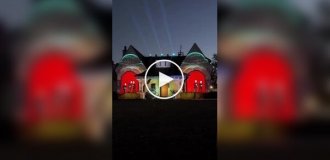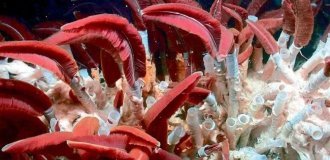Greenland - a country of glaciers, icebergs and greenery (10 photos)
There is an interesting paradox on the world geographical map associated with two territories that are, in essence, almost neighbors. In the North Atlantic between America and Eurasia there are two islands - a small one and a large one. 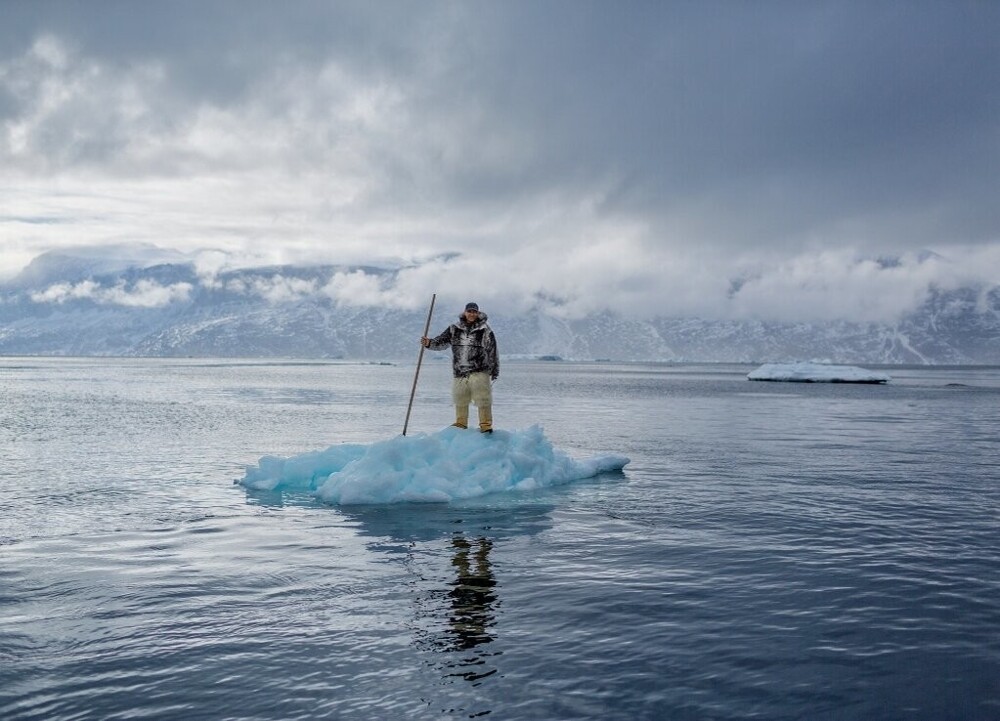
The first one pleases the eye with the emerald, almost plush greenery of the hills and fjords. And the second is an undivided and endless kingdom of white ice. But here’s the strange thing: the green island is called icy (Island - ice country), and the icy island is called green (Greenland - green country).
Iceland needs to be talked about separately, but today we are not talking about it, but about its white neighbor - the largest island on Earth, 80% covered with ice, which, by a strange whim of geographers, was called the “Green Country”. 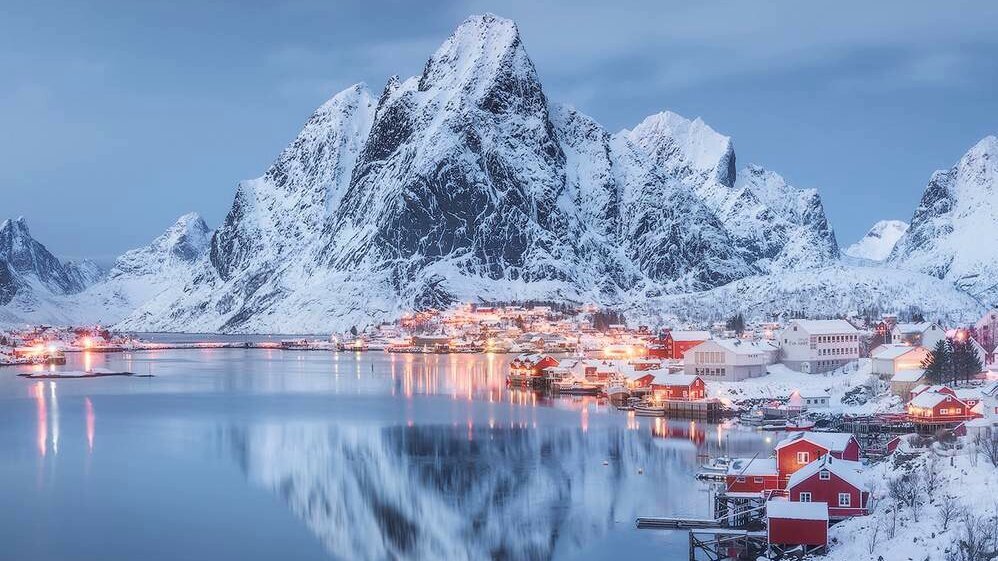
Greenland is a “green country”/ © AP
From the red Viking to the present day
To be historically accurate, such a strange name for Greenland was given not by geographers and navigators, but by one cunning Viking, whom his fellow tribesmen expelled from Iceland for three years for committing a blood feud murder. The warrior's name was Eric the Red, and he was far from a poor Viking, who had several dozen slaves in his service. This husband went to “serve his sentence” along with his entire household on the island, which in clear weather was dimly visible to the west of Iceland (280 km).
During the three years of his life on it, Eric did not meet a single aborigine, which allowed him to consider the territory completely his own. And when he returned from “exile” in 986, he began to tell his fellow tribesmen about the “green country”, in which there is not life, but a fairy tale. There is a lot of free territory, pastures for livestock, fat shoals of herring and whales and seals that are not at all afraid of humans. Of course, all this was a cunning advertising trick designed to attract more colonists to new lands. And it worked, mainly because of the stories of free land suitable for grazing and farming. So, around the year 1000, the first Europeans appeared and began to live permanently in Greenland. 
Greenland from above
In fact, this is the indigenous land of the Eskimos. They moved to the island from the Arctic regions of Canada even before the first Vikings, but did not take root. Their second coming happened after the Scandinavians, and for some time the two cultures existed independently of each other, knowing nothing about their neighbors. The Vikings occupied the southwestern part of the island, and the Eskimos occupied its western edge, from which it was a stone's throw to the Canadian archipelago.
Over time, the two cultures mixed, and over the centuries formed a special ethnic group called the Greenlanders. They are distinguished by their own language, which, by the way, is quite difficult to master. Its interesting feature is considered to be monstrous words that act as sentences. Here, for example, is the following morpheme: “Nalunaarasuartaatilioqateeraliorfinnialikkersaatiginialikkersaatilillaranatagoorunarsuarooq” (91 letters), which means a grandiose but unrealized plan that remains only on paper in the project. 
Greenland's young population
Let's get back to history. In the Middle Ages, Greenland was considered Norwegian territory, which then included Iceland. And in the 16th century, Norway and its overseas possessions entered into an alliance with Denmark. After almost three centuries, the union collapsed, but Greenland remained Danish. It remains as such to this day, being in the status of an autonomous part of the Danish kingdom. In essence, Greenland is an almost completely independent country with its own authorities, legislators, legal and judicial systems. The only thing that remains Denmark's prerogative is the island's foreign policy and control over its resources. And then in 1985, Greenland left the European Economic Community because the residents decided so in a referendum. As for minerals, there is more talk about them than actual mining activities.
Under the ice
And they exist in Greenland, because the island is not just a huge piece of ice from which icebergs periodically break off and sink ships like the Titanic. This is a real land with its mountains, lowlands and even canyons. But it is covered with a huge ice sheet, which was formed during the last ice age, giving rise to a solid surface three kilometers thick. It covers 80% of the territory of Greenland, gradually thinning and disappearing closer to the shores. In fact, Greenland is such a huge ice dome, the top of which (more precisely, two peaks) is located approximately in the geographical center of the island at an altitude of 3300 meters above sea level. 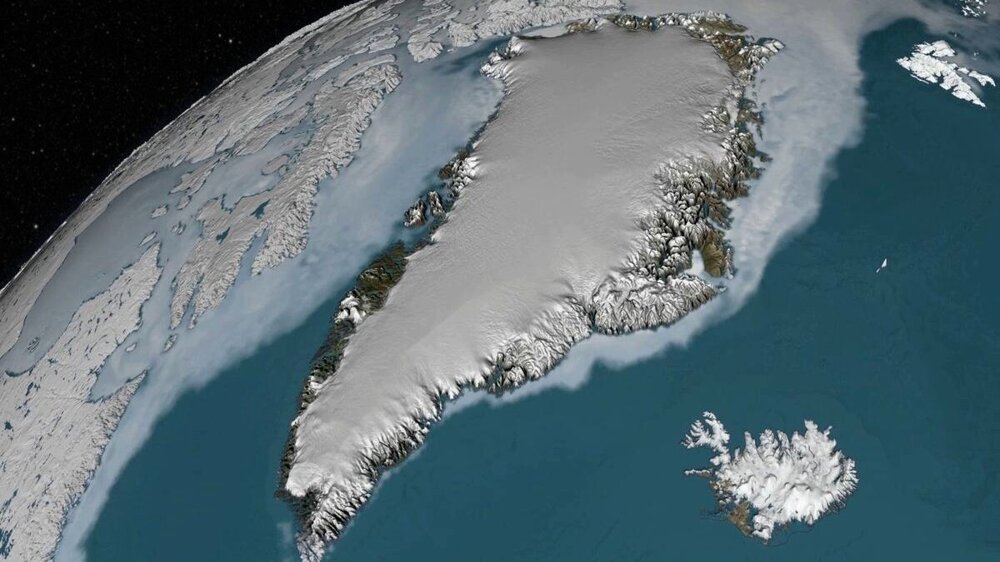
Greenland from space/ © NASA
But underneath it hides a lot of interesting things. We are used to the fact that when it comes to natural canyons, the Great American Canyon in the state of Arizona, USA, always comes first. But it turns out that it is only the second longest. And the record holder is located under the Greenland ice sheet, has a length of 750 kilometers and a width of about ten. Even before the glaciation, the canyon was part of the Greenland river system. Melt water still flows from it into the Arctic Ocean. 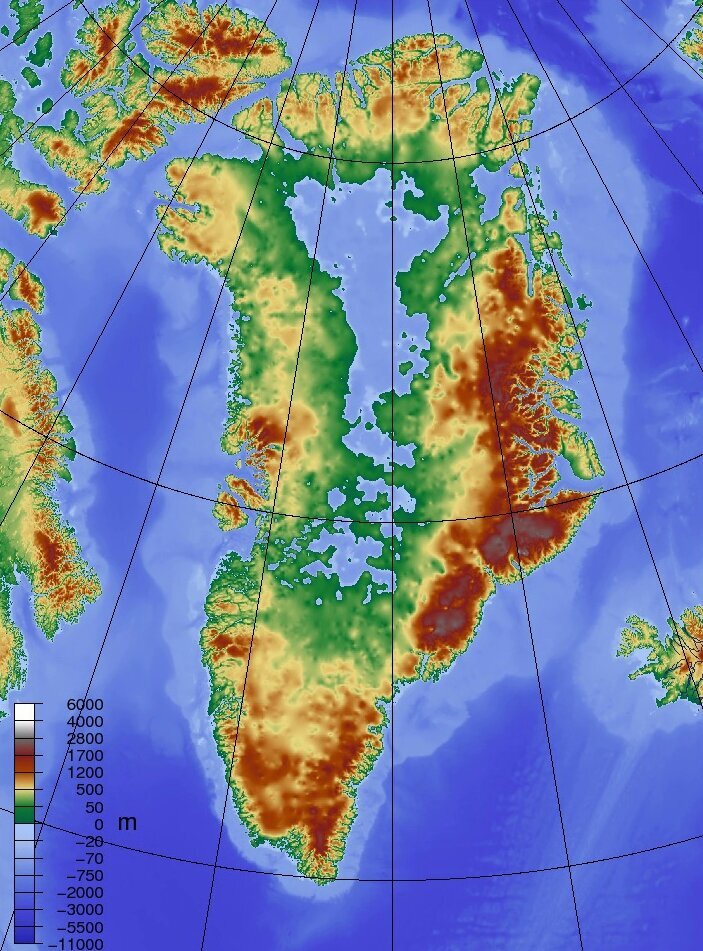
This is what Greenland would look like without ice
Greenland's glaciers gradually become thinner closer to the shores and in some places do not reach the ocean's edge. It is in these places that the entire population of the island lives - 56 thousand people. The most populated part of Greenland is its southwest. Here is the capital Nuuk (17 thousand people), standing in the center of a large fjord with rugged shores. The second enclave is the south of the island, and the third is its western part. The remaining coastal areas are not so densely populated, and there is nothing to say about the center - there are only autonomous weather stations there. By the way, one of these took away the title of “pole of cold” from Oymyakon, recording a temperature of minus 69.6°C. True, this was in 1991, and for some reason the record was revised only in 2020. 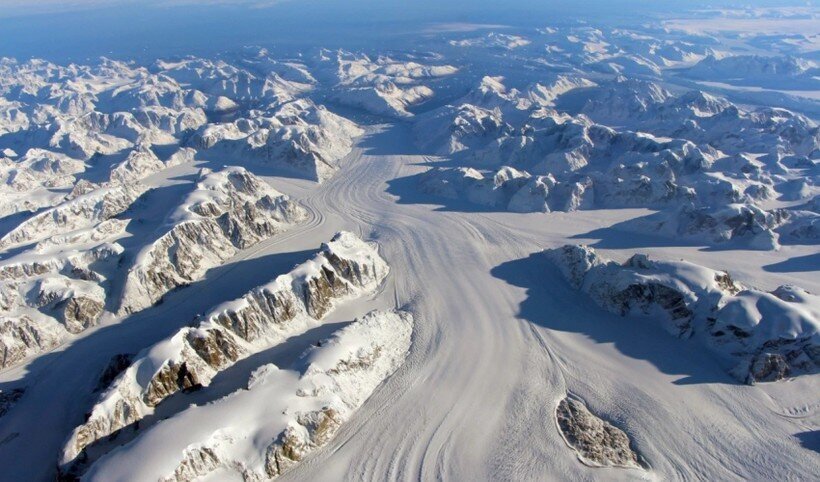
Center of Greenland
Life is colorful and disjointed
The life of Greenlanders is no different from that of other northern mainland and island peoples. Hunting and fishing are the two main local industries. Accordingly, the residents' food is mainly fish, although there are musk oxen on the island and hunting for them is even allowed in some places. Among the specialties of local cuisine, it is worth noting maktak - whale skin with fat on it. It is usually eaten raw, but for unprepared tourists it is often pickled in restaurants. Surprisingly, maktak tastes more like hazelnuts than the usual lard. 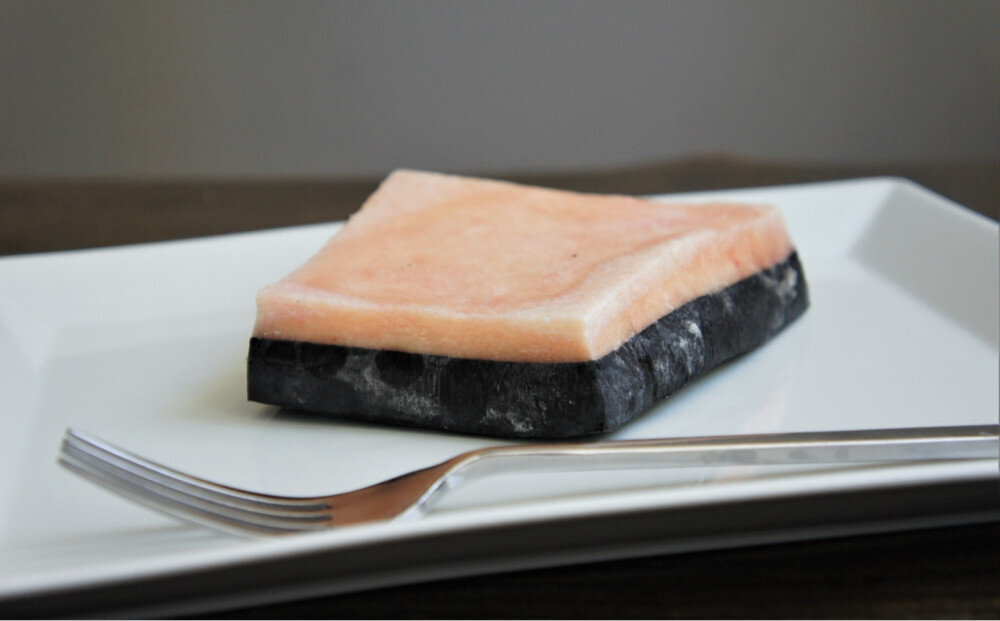
Maktak in a restaurant
For dessert, Greenlanders eat local Akutak ice cream, to which they add melted iceberg water to complete the taste. Interestingly, this ice cream does not contain a single gram of lactose, since many local residents have a congenital intolerance to it. Therefore, animal milk is often replaced on the island with soy milk.
Cities in Greenland are very compact, built up mainly with low, colorful buildings. Moreover, the color palette is very diverse, which adds a touch of revitalization, especially against the backdrop of white snow. But few tourists know that the island has a special color code by which public buildings are painted. Red houses signal that there is either a church or a store there. Yellow color is assigned to medicine, green - to communication points. The blue one was given to the fishing industry, and the black one went to police stations. However, such rules do not apply to residential buildings, so it is difficult to navigate by color in Greenlandic cities. 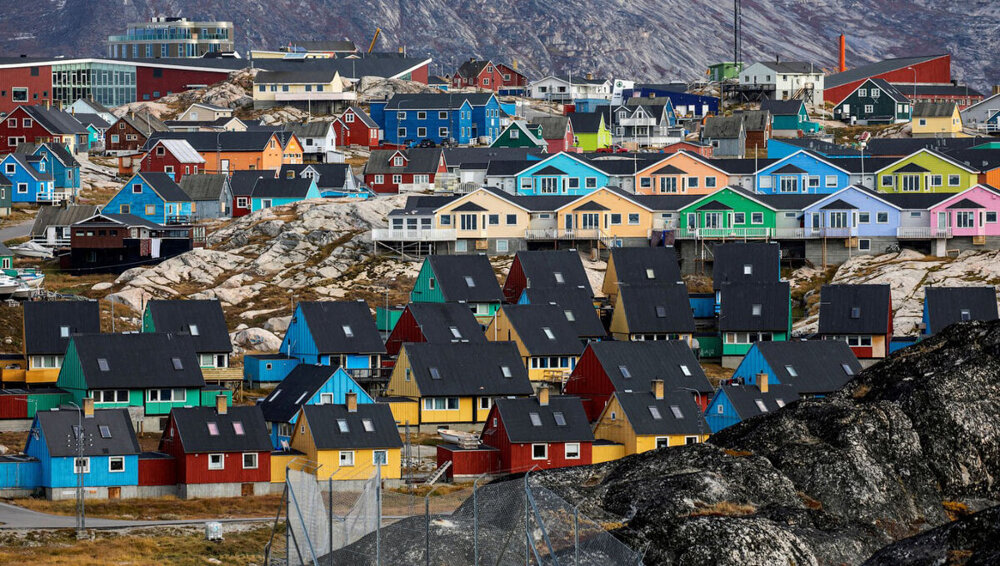
Greenland city
It is also difficult to get from one locality to another. The coasts of Greenland are very indented, so there is often no land communication between cities at all. Rare roads wind, carefully skirting the mountains and clinging close to the water, and the main means of communication are sea transport and helicopters. There are not airports everywhere, and even the capital, Nuuk, has only a modest runway for domestic flights. The country’s main air hub is located 300 kilometers north of Nuuk in the city of Kangerlussuaq, a place with the most stable weather. 
The most deserted and uninhabited part of Greenland (except for its center) is the north of the island, from which it is a stone's throw to the North Pole. There are only a few polar bases and military facilities there, which belong not to Greenland or Denmark, but to the United States. America has long had its eye on Greenland due to its important strategic location and even tried several times to buy the island from Denmark. The last such case occurred under President Trump, but Denmark indignantly rejected generous cash promises, proudly declaring that Greenland is not for sale.

